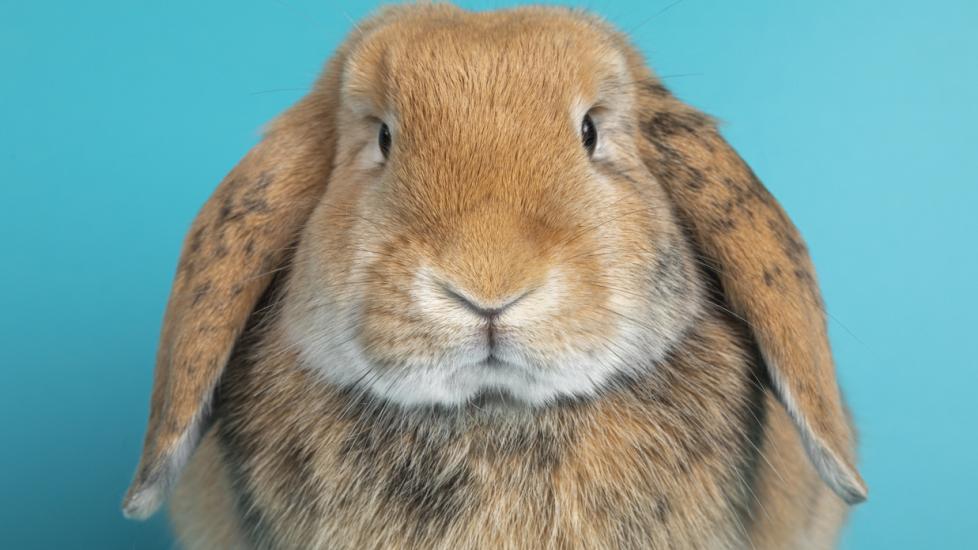How Long Do Rabbits Live?
Rabbits are active, intelligent, and social animals that can make excellent companions. All rabbits require a suitable environment, a healthy diet, fresh water, daily exercise, and social interactions with pet parents or other rabbits. While rabbits can make excellent pets, it is crucial to educate yourself about their care. They have specific dietary, housing, and medical needs—all important factors which contribute to their longevity.
Lifespan of Rabbits
Male rabbits are called bucks, female rabbits are called does, and rabbit babies are called kits.
There are at least 60 different rabbit breeds with an average lifespan of seven to 10 years. The oldest rabbit ever recorded lived to 18 years and ten months. Rabbits in the wild can live anywhere from one to nine years of age due to predators, habitat loss, and being hit by cars.
Stages of a rabbit’s life include the following:
-
Gestation averages 30–33 days
-
Average litter size: one to six kits
-
Kits open their eyes at about ten days and are fully weaned between 4–8 weeks
-
Puberty starts between 3–5 months of age
-
Does are fully mature around 7–8 months of age
-
Bucks are fully mature around 8–9 months
-
Smaller dwarf breeds can reach sexual maturity between 4–4.5 months of age
-
Senior rabbits are between ages 5–8 years old, depending on the breed
Generally, spayed or neutered rabbits live between 8–12 years of age. Unspayed female rabbits have a high risk for uterine cancer and often have a shorter lifespan. Genes also play a role in how long rabbits live. For example, Lionhead breeds can live on average seven to nine years, whereas Flemish Giant breeds may live five to eight years due to health issues but can exceed these averages. When obtaining a rabbit of a specific breed, it is essential for pet parents to research common health issues and discuss with your veterinarian.
What Makes Some Rabbits Live Longer Than Others?
Regardless of your rabbit’s breed, providing them with a suitable environment, healthy diet, daily social interactions, and exercise is vital. Spaying female rabbits to prevent uterine cancer can significantly extend their life expectancy. In addition, keeping your rabbit indoors safe from predators, extreme weather, and contagious diseases like Rabbit Hemorrhagic Disease Virus can keep them happy and healthy for much longer.
In general, your rabbit needs:
-
Unlimited timothy or alfalfa hay based on age, fresh greens, a small number of pellets, and fresh water
-
Daily social interactions with you or another rabbit
-
Routine medical examinations by your veterinarian
-
Proper housing
-
Safe toys and exercise to keep them mentally and physically stimulated
How to Improve Your Rabbit's Lifespan
Here are some tips to follow for rabbit pet parents who want the best for their pet:
-
Take your rabbit to the vet every six to 12 months for routine examination and dental checkup
-
Feed unlimited amounts of high-quality grass hay to your adult rabbits such as timothy, orchard grass, oat, or meadow hay
-
Alfalfa hay contains more calcium, fat, and protein and should only be fed to young rabbits and lactating or breeding rabbits
-
Feed high-quality rabbit pellets at 1/4 cup per 5 pounds of body weight per day
-
Feed only a small amount of treats
-
Offer safe vegetables and fruit in moderation
-
Offer new clean potable water daily
-
Allow a minimum of four hours of exercise per day where your rabbit can run around, hop, and play
-
Provide a large enclosure at least four times the size of your rabbit
-
Maintain an environment that is between 60–75 F at all times
-
Clean water and food containers daily
-
Spot-clean the litter box and bedding daily and deep clean everything once a week
-
Provide 1–2 inches of paper bedding in their cage and thick yoga mats or rugs in other areas to prevent pododermatitis or foot sores which can be very painful for your rabbit
-
Provide rabbits with mental enrichment like cardboard boxes and tubes, untreated non-cedar wood chew toys and sticks, hard plastic baby/cat/bird toys, dig boxes, tunnels and platforms
-
Rabbit-proof your home to keep your pets safe from chewing on electrical cords, toxic plants, walls, and baseboards
-
If you see any concerning signs like weight loss, drooling, diarrhea, lethargy, decreased appetite, or fecal pellets, contact your veterinarian right away
References
-
Marinell Harriman. House Rabbit Handbook: How to Live with an Urban Rabbit. Drollery Press. 2013.
-
Harcourt-Brown, Frances. Textbook of Rabbit Medicine. United Kingdom, Butterworth-Heinemann, 2002.
-
Quesenberry, Katherine, and James W. Carpenter. Ferrets, Rabbits, and Rodents-E-Book: Clinical Medicine and Surgery. Elsevier Health Sciences, 2020.
-
Parker, Karen. The Rabbit Handbook. United States, Barron's Educational Series, 2000.
-
Brown, Susan. Rabbit Care. Veterinary Partner. 2009.
-
RSPCA. Keeping your Rabbit Happy. 2022.
-
Pollock, Christal. Basic Information Sheet: European Rabbit. 2018.
Featured Image: iStock.com/Nynke van Holten
